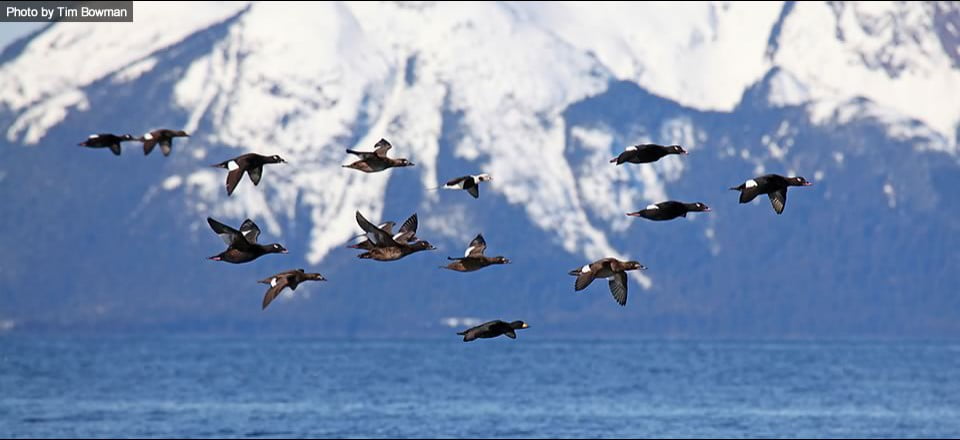Interim Report FY21
Interim Report FY22
Interim Report FY23
Interim Report FY24
Visibility correction factors for multiple species of sea ducks and diving ducks using an aerial remote sensing approach

Project Number: 160
Year Funded: 2020
Lead Institution(s): USGS Midwest Environmental Science Center
Project Lead: Luke Fara
Collaborator(s): William Beatty (USGS), Drew Fowler (USGS), Taylor Finger (Wisconsin DNR), Kyle Landolt (USGS), Steven Houdek (USGS), Benjamin Finley (USGS), Mark Koneff (USFWS)
Location: Great Lakes
Focal Species: All Sea Ducks, Bufflehead (Bucephala albeola), Barrow’s Goldeneye (Bucephala islandica), Common Goldeneye (Bucephala clangula), Harlequin Duck (Histrionicus histrionicus), Long-tailed Duck (Clangula hyemalis), Common Eider (Somateria mollissima), King Eider (Somateria spectabilis), Spectacled Eider (Somateria fischeri), Steller’s Eider (Polysticta stelleri), Common Merganser (Mergus merganser), Hooded Merganser (Lophodytes cucullatus), Red-breasted Merganser (Mergus serrator), Black Scoter (Melanitta americana), Surf Scoter (Melanitta perspicillata), White-winged Scoter (Melanitta delgandi)
Project Description: The goal of this project is to determine visibility correction factors for multiple species of sea ducks and diving ducks that migrate through Green Bay. We will use advanced aerial remote sensors to develop visibility correction factors that can be applied to previous and future ocular surveys throughout the Great Lakes region. The project is expected to address several SDJV priorities in addition to supporting: 1) the Upper Mississippi River and Great Lakes Joint Venture priority of understanding the importance of wintering locations for bird populations that may depend on habitats within the Joint Venture region, and 2) Wisconsin Department of Natural Resources efforts to increase surveys of waterfowl during the non-breeding period.
Project Reports:
